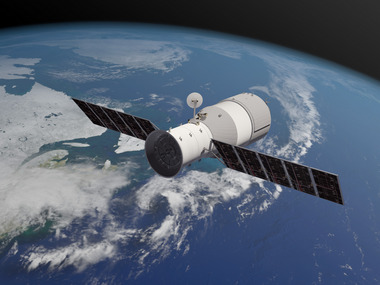China’s first space station, the Tiangong-1 which was expected to re-enter the Earth’s atmosphere on Sunday night mostly broke up during the re-entry process. [caption id=“attachment_4414565” align=“alignleft” width=“380”] Tiangong-1. Image: Aerospace Corporation[/caption] The
latest forecast from Aerospace Corporation, a non-profit organisation that has been tracking the space station stated that the re-entry was confirmed to be at 00:16 UTC (6:00 am IST). The re-entry of the 10 meter-long space station was said to have occurred in the Pacific Ocean. As
reported by BBC, it was astronomer Jonathan McDowell who took to his Twitter account to confirm that the exact location of Tiangong-1’s re-entry was towards the north-west of Tahiti, an island in the Pacific Ocean. Ideally, the defunct Chinese station should have been de-orbited in a planned manner, but this was not possible after the loss of command links with the station in 2016.
NW of Tahiti - it managed to miss the 'spacecraft graveyard' which is further south! pic.twitter.com/Sj4e42O7Dc
— Jonathan McDowell (@planet4589) April 2, 2018
According to the BBC report, usually, thrusters are fired on large vehicles to drive them towards a remote zone over the Southern Ocean, referred to as the ‘spacecraft graveyard’. While Tiangong-1 is considered to be large enough to cause damage in case of an uncontrolled re-entry, historically, it certainly does not make it to the list of the biggest uncontrolled object re-entries. The US space agency’s Skylab was stated to be almost 80 tonnes in mass when it came back partially uncontrolled in the year 1979. Certain parts of the space agency struck parts of Western Australia but no-one on the ground was hurt.


)
)
)
)
)
)
)
)
)



